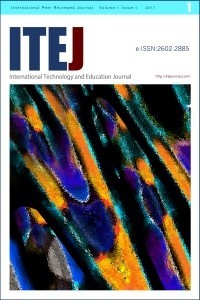Investigation of the Relationship between Pre-Service Teachers’ Technologies Self-Efficacy Perceptions, Attitudes towards the Use of Distance Education Environments, and Academic Procrastination Tendencies
Distance education, Technological self-efficacy, Attitude towards distance education environments, Academic procrastination tendency, Pre-service teachers
Investigation of the Relationship between Pre-Service Teachers’ Technologies Self-Efficacy Perceptions, Attitudes towards the Use of Distance Education Environments, and Academic Procrastination Tendencies
Distance education, Technological self-efficacy, Attitude towards distance education environments, Academic procrastination tendency, Pre-service teachers Distance education, Technological self-efficacy, Attitude towards distance education environments, Academic procrastination tendency, Pre-service teachers,
- ISSN: 2602-2885
- Başlangıç: 2017
- Yayıncı: Sayım AKTAY
Ahmet YIKMIŞ, Derya KARAASLAN, Mehmet YAVUZ
Gu Jian YA, Ao SHUANG, Zhang DİPİNG
Stereotyped Thoughts of Teacher Candidates Towards Science Courses: Sample of Turkey
Bayram IRMAK, Mutlu Pınar DEMİRCİ GÜLER
Online Learning Communities in Covid-19 Days: Mining Twitter Data
Dealing with Cheating in Online Exams: A Systematic Review of Proctored and Non-Proctored Exams
The Perceptions of Gifted Students about Distance Education: A Metaphor Analysis
